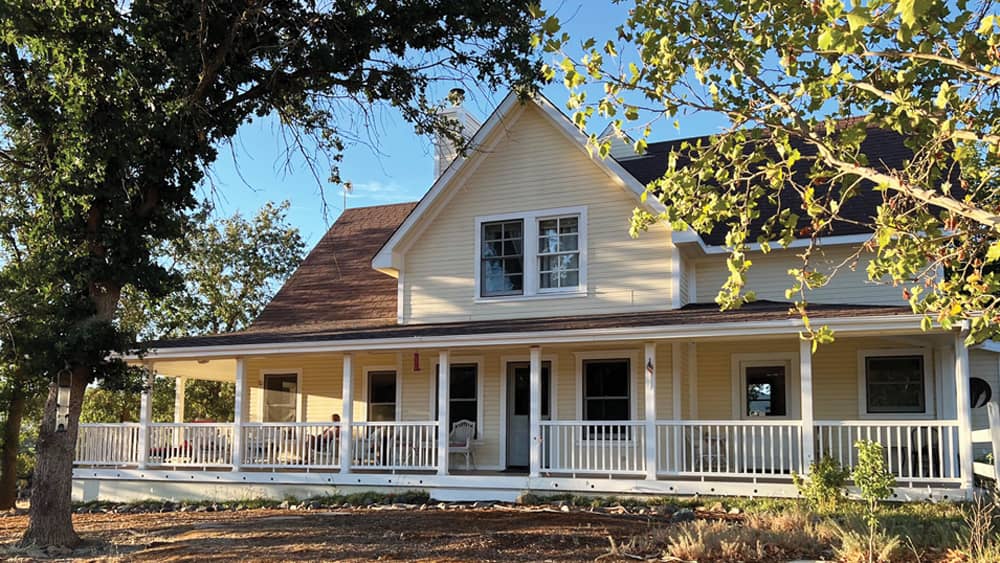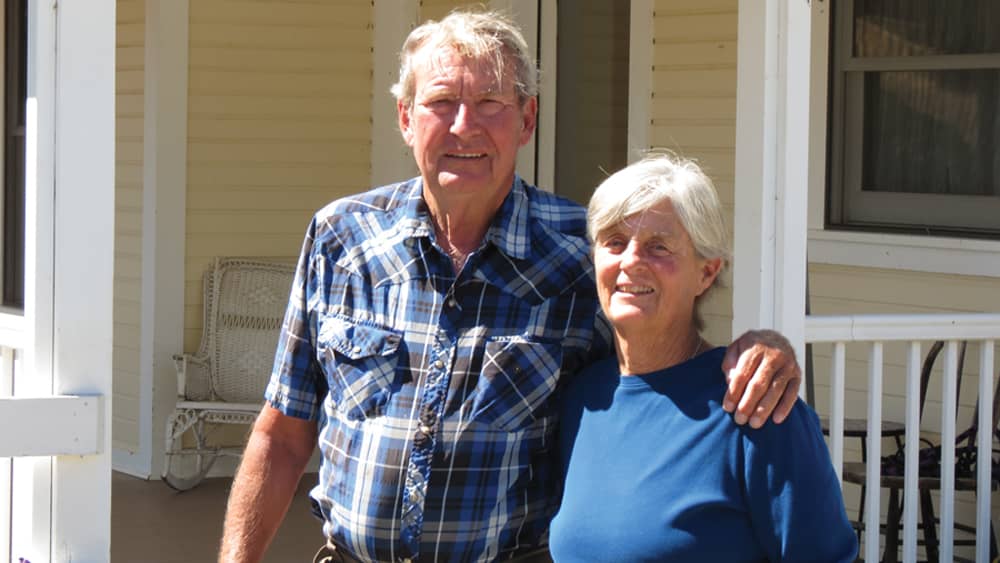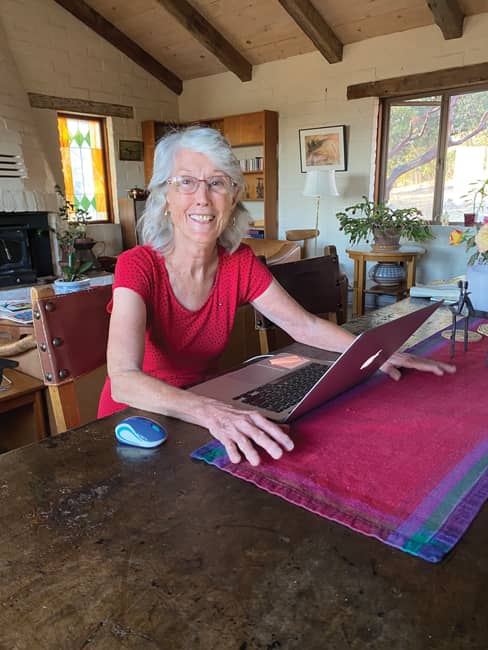
Back in the days when losing a home to fire was a rare occurrence, a homeowner’s insurance policy was one of those things you had, because the bank requires it, and it’s a good thing. Other than that, you didn’t give it much more thought.
Times have changed. Over the last five years, most everyone in the North Bay knows someone who has lost a home to one wildfire or another. And most of us are, at least at some level, braced for the possibility of the next fire. Even in the most beautiful days of summer, we know the possibility is still with us. We take steps to prepare—reviewing evacuation plans, refreshing go-bags and taking a look at defensive spaces around our homes. Is there something more we should be doing? Something that, should a disaster happen, would have made all the difference?
In the aftermath of a fire disaster, there are two worlds. In one world, property owners suffering the loss of their homes can grieve from the comfort of a secure temporary residence and move forward, making plans to rebuild or replace their homes. In another world, property owners, in shock over the loss of their homes, suffer aftershock after aftershock as they begin to work with their insurance agents, realizing along the way that their homeowner’s policy, which they thought was fine, is not. They find their policy to be insufficient to replace or rebuild their home. Sometimes they find that the coverage they assumed they had is nonexistent, and they discover that getting reimbursed for values they claimed will be a long, sad, wearying slog. Losing a house to fire is a primal shock. Confronting your policy afterward should not be.
Are you covered?

If you have a homeowner’s policy, then of course, you are “covered.” But what does that mean? In general terms, “covered,” means you are insured for the amount listed on the declarations page of your policy, explains Robb Daer, chief operating officer at George Petersen Insurance Agency. “But these days, that amount varies with the rise of building costs and changes in building codes,” he says, referring to the effects of the fires since 2017. A policy should include extensions, allowing for unforeseen increases in costs.
“One of these extensions is the Ordinance and Law coverage,” says Daer. “That provides coverage for changes in building codes up to the limit specified in the policy. And there’s been a ton of them since the Tubbs fire—things like solar, fire sprinklers, energy-efficient windows and fire-resistant roofing.” All of these measures, like the tempered glass windows, that withstand heat better, are means to keep fire from entering the house. Daer says that some of the home-hardening measures, such as fire-resistive siding and roofing materials, are now part of the building codes. These measures are expensive. So, does doing your “home hardening” give you a price advantage in writing your policy? (Or, in getting a policy at all?)
“Not always, because each carrier has their own underwriting guidelines,” says Daer. There are also carriers that will just exclude writing any new coverage in a particular ZIP code deemed risky. “So, you could have a house built with that concrete siding, everything they want, but if you’re in a particular ZIP code, for a carrier that’s not writing [policies] there, then they won’t carry you. Or, in some cases they won’t renew your policy.” Why is that? “For example, if an insurance carrier has $100 million worth of coverage in a particular ZIP code or neighborhood in a fire zone,” says Daer, “it may want to minimize its risk there.” That may explain some of those non-renewals.

Such discretion is understandable from the insurer’s point of view, but can be hard on residents. Former owner of Calistoga’s Barrel Builders, Phil Burton, has lived with his family on their ranch in Pope Valley for almost 40 years. Though his place is located in the 94574 St. Helena area, he says it’s a red flag to insurance companies.
“We were insured with Nationwide for almost 30 years, never made a claim on our homeowner’s insurance, and were never late on a payment,” he says. “We thought everything was hunky dory. And then, all of a sudden, out of the clear blue, they said we were being canceled.” Burton had no idea why and tried reasoning with Nationwide. As a volunteer firefighter there for decades, he knew the place and pointed out that there was defensible space, extra water, a wet draft (meaning it’s connected to a source of water) and easy access for fire trucks. But the insurance carrier didn’t care, and no one wanted to check further into it.
“We were in an area that I believe is rated a ‘10’ by insurance carriers,” says Burton, adding that he learned that’s the least desirable rating by a carrier. Burton hunted around to secure another policy, this time with Oregon Mutual. Things went well until this year when they got a note saying the policy will not be renewed in October. He and his agent continue to look. At the mention of California FAIR Plan, he makes a sound suggesting disgust. “Last resort,” he says. “Last resort.”

The California FAIR Plan
“Placing policies is a bigger challenge than it’s ever been,” says Kimberly Menager, owner and agent at Fairway Napa Valley Insurance Services, Inc. “And that’s why as a broker, I’m grateful for the stable of carriers I work with. I don’t have just one option. I’ve got a handful of carriers, so in most cases I can find coverage.”
When she can’t, she is grateful to have the California FAIR Plan. “FAIR is a consortium of carriers that do business in California,” she explains. “They share the risk in proportion to the amount of business they do in the state.” Spreading the risk enables them to offer coverage to those who cannot get it otherwise.
“By spreading [risk] out amongst all the carriers, it lessens the threat of catastrophic loss wiping out any one carrier,” says Menager. Given the number of catastrophes across the state—and nationwide—this seems a good thing, however costly. “It’s the carrier of last resort,” she says. “If there’s any other option for my clients, we definitely want to go that way, but unfortunately, sometimes there is no other option.”
What’s so bad about it? “The cost, but you’re writing it for the riskiest locations,” she says. “So, the price would be high, with any carrier. But you’re not going to get the same concierge service as you get in the private market.”
Underinsured

Ann Holmes, resident of Deer Park, knows about the disappointment of discovering she is underinsured, and the frustrations of working with the California FAIR Plan. She lost her longtime policy after the Tubbs fire in 2017. Though she was not directly affected by that fire, she was considered to be in a fire-prone area.
In the wee hours of September 2020, when the Glass fire came roaring toward her house, Holmes was insured by the California FAIR Plan. It was an expensive plan—twice the cost of her former policy. And since the plan covers only damage caused by fire, she needed an additional supplementary homeowner’s policy and had to pay twice the cost, but it was worth it. “I had my house insured, so if it did burn down, I wouldn’t be out the whole cost of my [new] house.” But she never believed it would burn. “It’d been there for about 50 years, ever since my husband and I built it, with our own hands. So, when it did burn, I was horrified.” Though she was horrified, she was not unprepared. Since before 2017, she’d been making the usual defensive space adjustments, “I had trimmed all trees for about 50 feet out from the house, so that a grass fire going through wouldn’t catch them afire. I had taken out trees that would connect a fire from one tree to the next tree, to the next tree.”
As for possessions, she’d done her due diligence there, too. “I had photographs of my possessions in the safe deposit box downtown in Saint Helena. That was very important.” Putting a value on her possessions was difficult, as her house was filled by irreplaceable art, having been collected over a lifetime’s travels all over the world, with her late husband, Fred. She probably could’ve evacuated with more than she did, but at 3 a.m., with a wall of fire advancing up the hill, all she could think of was getting out alive.
“I had a go-bag, but I did not have the things in my go-bag that I should have––like my passport,” she says. “It was not there. My checkbooks were not there. I was missing a year of the last three years of tax returns because I was being audited and I had gotten it out to look. I had my jewelry. I didn’t have photographs. I had some toiletries. I had underwear and medications.” She and her tenant were given a half-hour warning to get out. “I knew some artwork that I wanted to take. and I knew some carpets I wanted to take. I grabbed what I could carry and put them in the trunk of my car.” In the scramble, and the dark, running down the back stairs, she tripped over a rock and took a bad fall. “So I had the shock of waking up and the shock of falling.”
In that condition, a person, driven by a massive surge of adrenalin, can do amazing things, some regrettable. “I walked right by a gold bracelet that was sitting on my dresser,” she laughs, ruefully. “You know, dumb things like that.” There were other items she could’ve taken, she adds, but partly because she was dazed, and partly because she didn’t think the place would burn, she didn’t. She made it out, safe and alive. In a couple of days, she began, as she says, “the long and determined struggle to be paid every cent that I thought I should be paid.”
Nearly two years later, this process hasn’t ended, but the end is in sight. Thanks to her bulldog diligence, and willingness to challenge her insurance adjuster with prices and facts, she is looking forward to living in her new home on six acres that will be lovely in a quite different way from the woodland she had known.
After a loss
Where people tend to have the most frustration with a carrier after a loss is when either the home is underinsured based on replacement costs, or when there are other structures that are underinsured, says Menager.
Ann Holmes would probably agree. After the fire, her first shock, after viewing the devastation of what had been her home, was that she was somewhat underinsured for the house, but seriously underinsured for the other buildings. Knowing this, she was determined to fight for replacement value for which she had been paying. Not simple. “I brought the insurance adjuster out to the property. He took photographs and looked around.” The scene was shocking. “Everything was destroyed. The house, the huge wooden deck that connected my house with the Redwood swimming pool and rental unit. The rental unit was gone, the bedroom and the forest were gone, the woodshed was gone. Everything. And most of the trees were killed by the fire.”

How does one stand in the face of such loss? Holmes faced it straight on. She describes meeting a UPS delivery man who had lost his house, in 2017. “He said his whole family was still crying over their old house and how they missed it, and I told him flat out, right then, that he had to stop that, and learn to love his new house because that was the future.”
When looking at some relics she’d brought home from the burned site, she decided not to keep them. She didn’t want to create a shrine to the past. “The house that my husband and I built, and the things in it, were part of a past life. And I had to look forward to the future, if I was going to survive. I had to focus on replacing that house with something I would love. It had to be a totally different [house] than what I had before.”
Practical steps
To get that new house, Ann Holmes took the claims process by storm with her insurer, the California FAIR Plan. The challenge was to replace her home and rental unit to what they had been before. Given her policy, she found that would be short of impossible. Plus, inflation and the costs of building were skyrocketing.
“The price of lumber went crazy,” she says. “So did the price of contractors and labor. Everything shot up.” She knew, of course, that was to be expected when there’s a major fire. “Everything that goes into a house goes up in price.” So, there was that. But the emotionally hard part had to do with valuing the possessions. With her policy, she had to list each item, and include the age and value. That meant remembering, if she did not have a photograph, what was in this drawer? What was in that closet? “And it’s the most painful, awful thing in the world,” she says. “To fill out sheets, and sheets, item by item, and have to declare how old they were, what condition they were in and how much they should be depreciated. And I had to figure that myself.”
She went through the house from memory, room by room, and completed 60 pages, listing 373 items. Then, the insurance adjustors look the item up on a website for insurance adjusters. So, if you’ve been paying for a policy that covers possessions as valued at a certain amount, you do not automatically get a check for that amount. “You have to sit down and do the homework for every single item.”

Count every nail
One would think getting reimbursed for the lost structure would be simple. If a home is insured for $1 million and your house burns down, the policyholder receives a check for $1 million. Not likely.
While each policy and carrier are different, the way it worked for Holmes was that you have a set maximum you can be paid. And then when you make a claim, they will do whatever they can to pay you less than that. Holmes’ insurance adjuster deducted $98,000 from the set value––for depreciation. “That’s ‘depreciation’ on an appreciating house in Napa Valley,” she says, laughing at the craziness. “I had to prove him wrong, and I did.” (A former teacher, she’s good at math.)
Still, proving the replacement value of the house was an effort. The agency presented her with a 66-page review with 14 elevations, showing how many boards and nails would have been in each view of her house. They included siding, everything. But the values they set for the materials did not represent what she had had in the house. Where she 4-foot by 8-foot redwood siding, the insurer factored in a cheaper option. Holmes told her insurer, “I have replacement value, and you have to cover the replacement value.” So, she went to the store and priced exactly what the replacement value of each board and each box of nails would be, and corrected the adjuster’s estimate, page by page. “I just went down that list and they just took one, a horrified, look at it and said, ‘Oh.’”
For her, it’s all working out. It hasn’t been perfect, but without the California FAIR Plan, and without her dogged application to each detail, she would have been in a much different world.
So, what does a policyholder with homeowner’s insurance need to know? Kimberly Menager advises policyholders to sit down with their agents and make sure coverage includes the ability to rebuild or replace a home for the amount of coverage insured.
Agents help their clients understand the extended replacement costs, which is a protection against a demand surge. Agents remind policyholders to take a careful look at coverage for other structures on their properties, such as fencing, pools, sheds, driveways, and outbuildings. They’ll suggest that clients take an inventory of their homes. “[It’s] very important because people forget what they had,” she says. “Making the inventory can be super simple.” Menager’s pro tip: “Walk through your house and with your smartphone record what you have, not so much because you’re going to be pressed by your carriers to provide a receipt for everything, or proof of that you owned clothes––but because you’ll forget. People remember the big stuff, a couch, a TV. But are you going to remember all the Tupperware you had?”
When the smoke clears
When someone sustains a loss, the very last thing a policyholder wants is another shock in that terrible, chaotic moment after the fire. No one wants to hear, “You’re not covered for that.”
Hope for the best, but prepare for the worst. Take the time to talk with your agent to make sure the policy you have—or will revise—is the best coverage you can get.
Be Prepared
What’s the best way to prepare in the event you lose your home to a fire? Robb Daer, chief operating officer at George Petersen Insurance Agency. offers this short list.
Insurance coverage
Video your home to document personal property. This could help avoid a long painful process of documenting a claim.
Review Coverage A limits with your agent. Know what your replacement cost is as well as your “extended replacement cost” coverage.
Review your “other structures” coverage. This includes fencing, detached structures (shed, out buildings, garages), hardscape, pools and solar panels.
Consider increasing your deductible. Increasing your deductible is one way to minimize large increases in premium. Also, avoid filing smaller claims such smoke damage.
Create list of things to do if you must evacuate. For example, shut off AC/HVAC, close windows and doors, and take any irreplaceable items that you can.
Protect Your Home
Things to do to protect your home that won’t necessarily get you a discount, but could slow down a fire and reduce damage.
- Clear brush, trees and weeds from around your home.
- Install gutter covers.
- Install ember-resistant roof and foundation vents.
The Role of an Agent
The role of an insurance agent is key to making sure a policyholder has proper coverage, according to Tom Hubert, senior vice president of auto, insurance and wealth services at Redwood Credit Union. He advises that homeowners work with their agents and discuss these three things:
- What is covered in the policy and what is not covered.
- What types of extensions of coverage are in place, in case replacements are more expensive than estimated.
- What type of inflation guards are included in the policies.
All of these things differ from carrier to carrier, says Hubert, and that’s why it is important to sit down with an agent at least every two years to make sure the coverage is up to date.
Insurance Information
The following sources offer a range of information and resources.
California Department of Insurance
FIRESAFE MARIN




